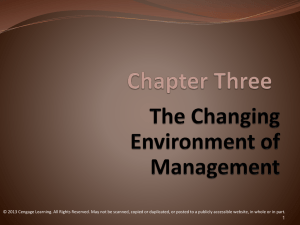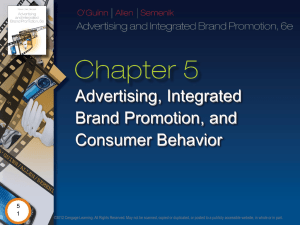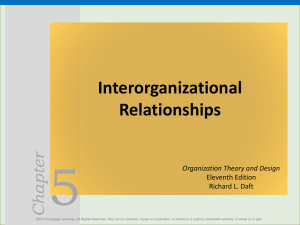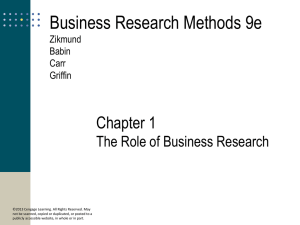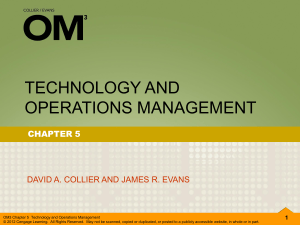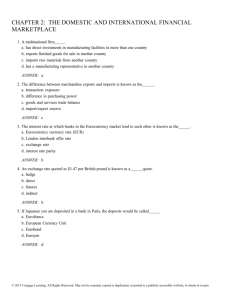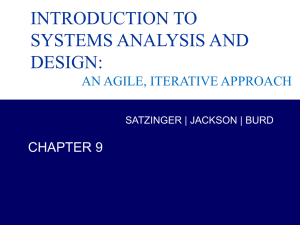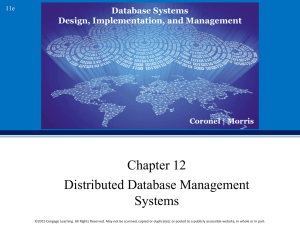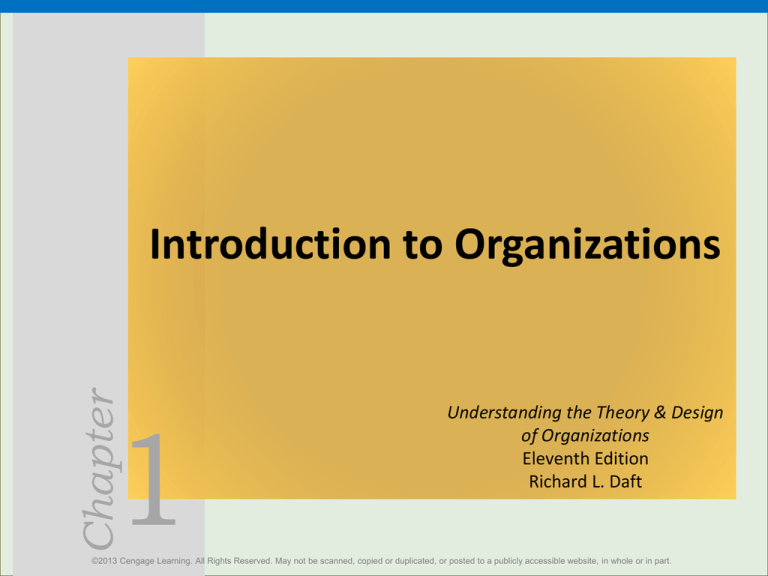
Chapter
Introduction to Organizations
1
Understanding the Theory & Design
of Organizations
Eleventh Edition
Richard L. Daft
©2013 Cengage Learning. All Rights Reserved. May not be scanned, copied or duplicated, or posted to a publicly accessible website, in whole or in part.
Organization Theory in Action
• Current Challenges
–
–
–
–
–
–
Globalization
Intense Competition
Ethics and Social Responsibility
Speed of Responsiveness
The Digital Workplace
Diversity
• Organization theory helps us explain what happened
in the past, as well as what may happen in the
future, so that we can manage organizations more
effectively
2
©2013 Cengage Learning. All Rights Reserved. May not be scanned, copied or duplicated, or posted to a publicly accessible website, in whole or in part.
What is an Organization?
Social entities that are goal-directed
Designed as deliberately structured and
coordinated activity systems
Linked to the external environment
Includes large multinational corporations,
family owned businesses as well as nonprofits
3
©2013 Cengage Learning. All Rights Reserved. May not be scanned, copied or duplicated, or posted to a publicly accessible website, in whole or in part.
Importance of Organizations
• Organizations are a means to an end
• The corporation has played a significant role in the last 100
years
• Produce goods and services efficiently
• Facilitate innovation
• Adapt to and influence a changing environment
• Create value for owners, customers, and employees
• Accommodate ongoing challenges of diversity, ethics, and the
motivation and coordination of employees
4
©2013 Cengage Learning. All Rights Reserved. May not be scanned, copied or duplicated, or posted to a publicly accessible website, in whole or in part.
The Importance of Organizations
5
©2013 Cengage Learning. All Rights Reserved. May not be scanned, copied or duplicated, or posted to a publicly accessible website, in whole or in part.
The Evolution of Organization
Theory and Design
Historical perspectives provide insight into
how organization design and management
practices have varied over time in response
to changes in society.
6
©2013 Cengage Learning. All Rights Reserved. May not be scanned, copied or duplicated, or posted to a publicly accessible website, in whole or in part.
Historical Perspectives
• Efficiency is Everything
– Scientific Management: Pioneered by Frederick Winslow Taylor
• How to Get Organized
– Administrative Principles
• Contributed to Bureaucratic Organizations
• What about People?
– Hawthorne Studies
• Can Bureaucracies Be Flexible?
– Flexible and lean; focused on service, quality, and engaged employees
(1908s)
• It All Depends: Key Contingencies
– Contingency: there is no “one best way”
7
©2013 Cengage Learning. All Rights Reserved. May not be scanned, copied or duplicated, or posted to a publicly accessible website, in whole or in part.
Characteristics of Three
Organizations
8
©2013 Cengage Learning. All Rights Reserved. May not be scanned, copied or duplicated, or posted to a publicly accessible website, in whole or in part.
Performance and
Effectiveness Outcomes
• Efficiency – amount of resources used to achieve
the organization’s goals
– Do the things right
• Effectiveness – the degree to which an
organization achieves its goals
– Do the right things
• Stakeholder Approach – balancing the needs of
groups in and outside of the organization that has
a stake in the organization’s performance
9
©2013 Cengage Learning. All Rights Reserved. May not be scanned, copied or duplicated, or posted to a publicly accessible website, in whole or in part.
Dimensions of
Organization Design
Structural Dimensions
–
–
–
–
–
–
Contingency Factors
–
–
–
–
–
Formalization
Specialization
Hierarchy of Authority
Centralization
Professionalism
Personnel Ratios
Size
Organizational technology
Environment
Goals and strategy
Culture
10
©2013 Cengage Learning. All Rights Reserved. May not be scanned, copied or duplicated, or posted to a publicly accessible website, in whole or in part.
Interacting Structural Dimensions of
Design and Contingency Factors
11
©2013 Cengage Learning. All Rights Reserved. May not be scanned, copied or duplicated, or posted to a publicly accessible website, in whole or in part.
Organization Chart
12
©2013 Cengage Learning. All Rights Reserved. May not be scanned, copied or duplicated, or posted to a publicly accessible website, in whole or in part.
Major Stakeholder Groups
and What They Expect
13
©2013 Cengage Learning. All Rights Reserved. May not be scanned, copied or duplicated, or posted to a publicly accessible website, in whole or in part.
Mitzberg’s Organizational Types
Mintzberg proposed that the five parts could fit together in
any type of organization
In real-life organizations, the five parts are interrelated and
often serve more than one function
14
©2013 Cengage Learning. All Rights Reserved. May not be scanned, copied or duplicated, or posted to a publicly accessible website, in whole or in part.
Organic vs. Mechanistic
• Mechanistic – characterized by machine-like
standard rules and procedures with clear
authority
• Organic – design of organization is looser,
free-flowing, and adaptive
Depends upon:
–
–
–
–
–
Structure
Tasks/Roles
System Formality
Communication
Hierarchy versus Collaboration
17
©2013 Cengage Learning. All Rights Reserved. May not be scanned, copied or duplicated, or posted to a publicly accessible website, in whole or in part.
Organic and Mechanistic Designs
18
©2013 Cengage Learning. All Rights Reserved. May not be scanned, copied or duplicated, or posted to a publicly accessible website, in whole or in part.
Contemporary Ideas
• Today’s organizations are still imprinted with
hierarchical, formalized mechanistic approach
• Open Systems are adaptive and interact with the
environment
• Chaos theory states that relationships in complex
systems are nonlinear
– Chaos operates with some predictability which is the
challenge of today’s managers
19
©2013 Cengage Learning. All Rights Reserved. May not be scanned, copied or duplicated, or posted to a publicly accessible website, in whole or in part.
Framework for the Book
• Examine specific characteristics of organizations
• Examine the nature of and relationships among groups and
departments
• Organizational behavior is the micro approach
• Organization theory is the macro examination
• Organization theory is concerned with the big picture of the
organization and its major departments
20
©2013 Cengage Learning. All Rights Reserved. May not be scanned, copied or duplicated, or posted to a publicly accessible website, in whole or in part.



